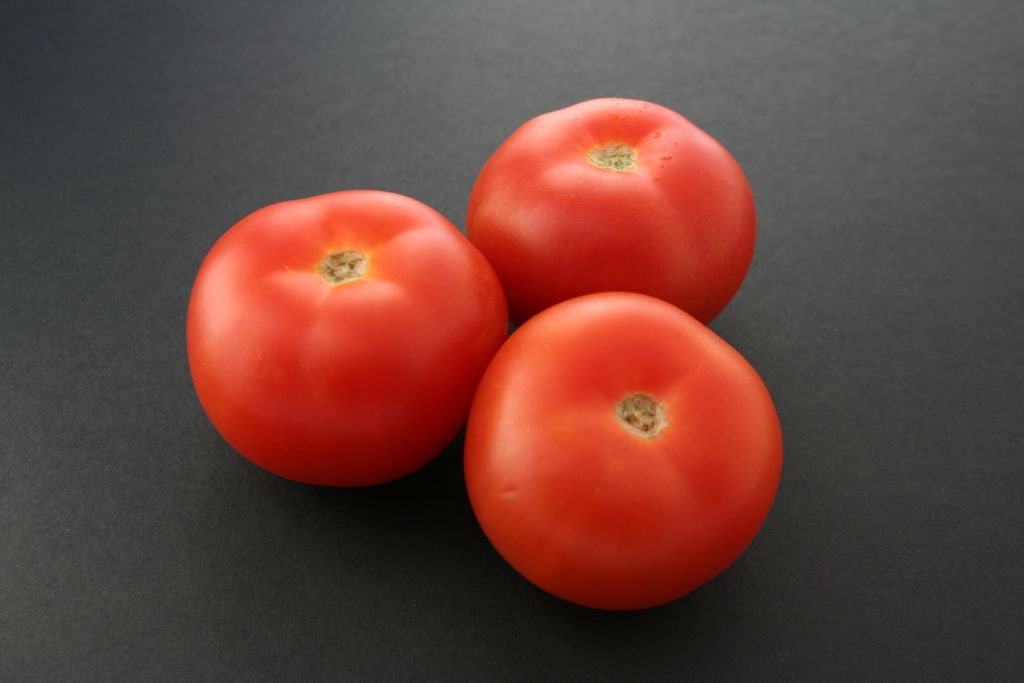Tomato

Image copyright jonsay.co.uk
There are over 7500 varieties of tomato plants and they are usually grown in warm, humid environments however in colder climates greenhouses work very well for this tasty fruit. As with many crops China is now the worlds largest producer with close to one third of the worlds production.
Technically the tomato plant is a type of vine and if given enough support can grow upto 6 feet in size, but are just as happy growing on the floor which can lead to damage from creatures like slugs. Unfortunately they have very week stems and cannot support themselves so when cultivated they are usually tied to sticks to keep the fruit off the floor.
The fruit can be quite sour to sweet depending on the variety and the different varieties are often used in different ways. Some varieties lend themselves well to being used in tomato sauces which is noticeable in Italian cuisine and other varieties are best when eaten raw in salads. There are also tomato juice drinks and soups. Because the tomato is sour (acidic) the fruit has a high resistance to bacteria once processed. A raw untouched tomato can still develop mold on its surface.
Tomatoes are naturally high in antioxidants and contain vitamins A, C and E as well as other essential nutrients such as potassium.
Nutritional Information 100g of an average Tomato:-
| Calories | 18 kcal |
| Carbohydrates | 3.8g |
| Protein | 1.0g |
| Fat | 0.2g |
| Fibre | 1.2g |
| Tomato in other languages:- |
| Cebuano: | kamatis |
| Chinese: | xīhóngshì 西红柿 |
| French: | f tomate |
| German: | f tomate |
| Greek: | f ντομάτα |
| Indonesian: | tomat |
| Italian: | m pomodoro |
| Japanese: | tomato トマト |
| Nederlands: | c tomaat |
| Norwegian: | m tomat |
| Polish: | m pomidor |
| Portuguese: | m tomate |
| Spanish: | m tomate |
| Swedish: | c tomat |
| Tagalog: | kamatis |
| Turkish: | domates |